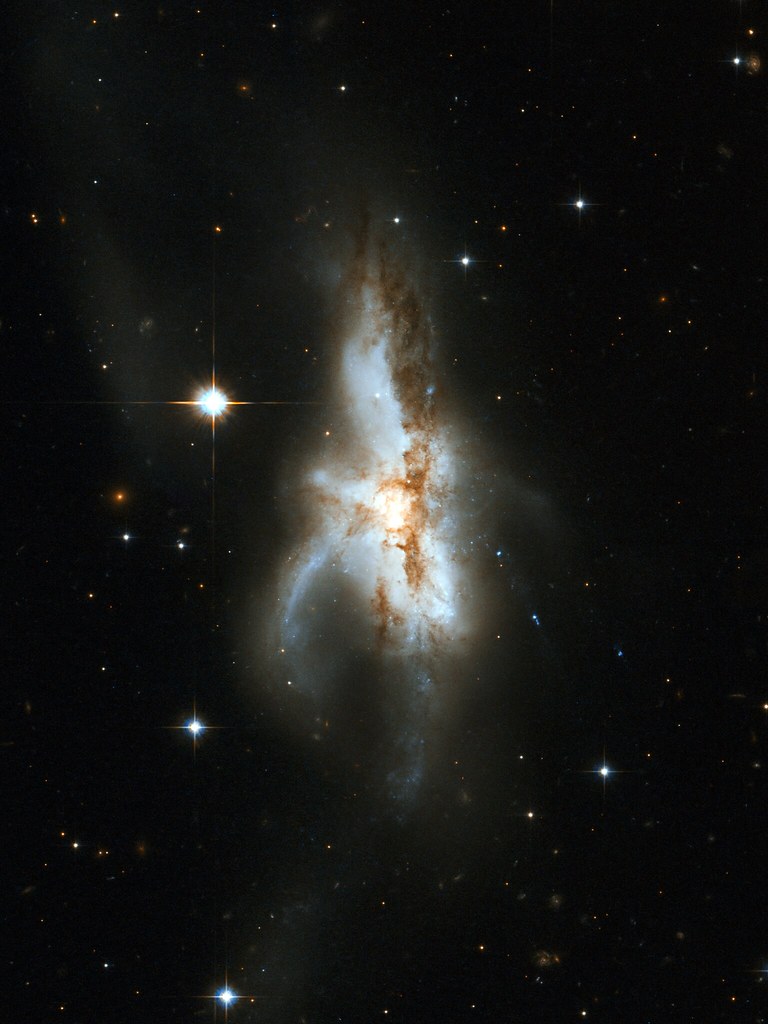The Cosmos with NGC 6240
Three Black Holes with two at only 650 light-years apart, the pair is the closest supermassive black hole duo known. The existence of the third black hole means this cosmic collision may proceed faster than previously thought, in a few million (rather than a few hundred million) years.
By measuring the speeds of stars whirling around each black hole, Kollatschny’s team estimates that the northern black hole has 400 million Suns’ worth of mass; the southern duo has 700 million and 90 million solar masses, respectively. The whole trio is contained within a volume less than 3,000 light-years across.
“Such a concentration of three supermassive black holes has so far never been discovered in the universe,” says coauthor Peter Weilbacher (Leibniz Institute for Astrophysics Potsdam, Germany).
NGC 6240’s fluffy appearance has long been assumed to come from the collision of multiple galaxies, but the existence of a third supermassive black hole in its center suggests it was three galaxies that came together. Light from the galactic collision took 340 million years to travel to Earth so, astronomically speaking, it’s relatively nearby. Kollatschny and colleagues note that there are very few other galactic crashes at this stage of evolution, and theoretical calculations have shown that such multiple mergers should be rare in the present-day universe. 400Mly
